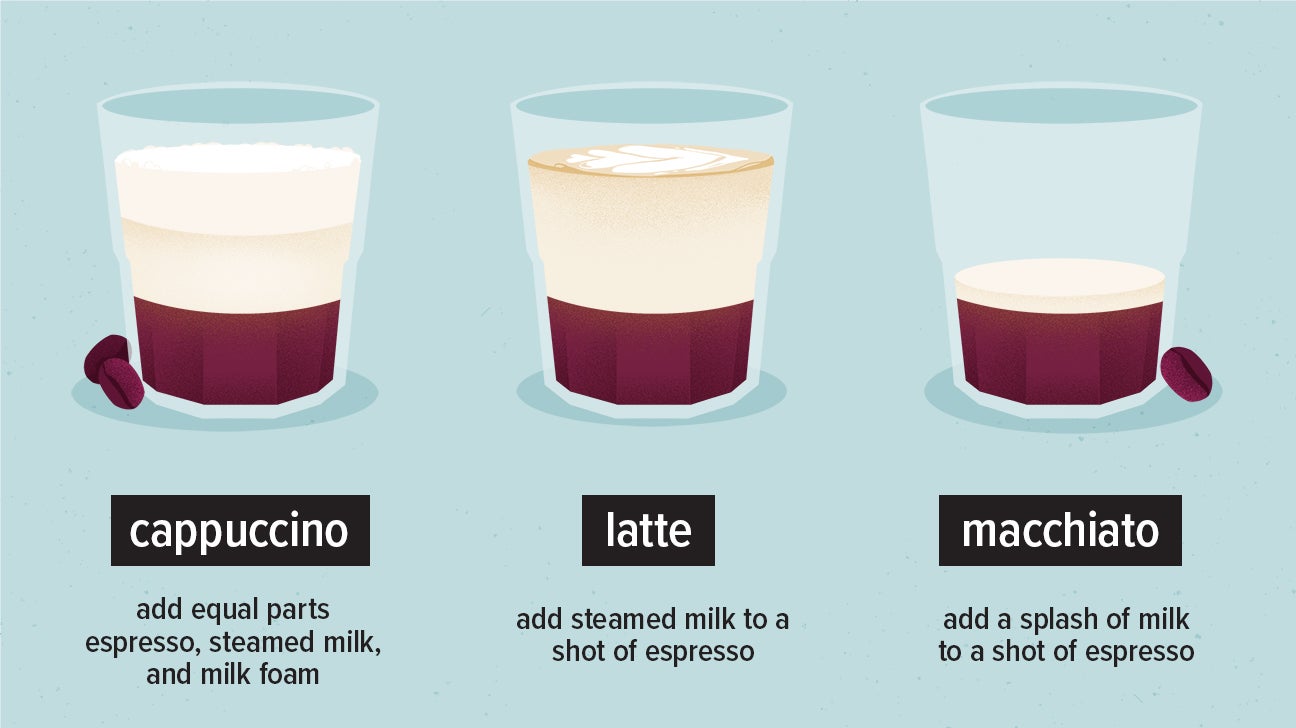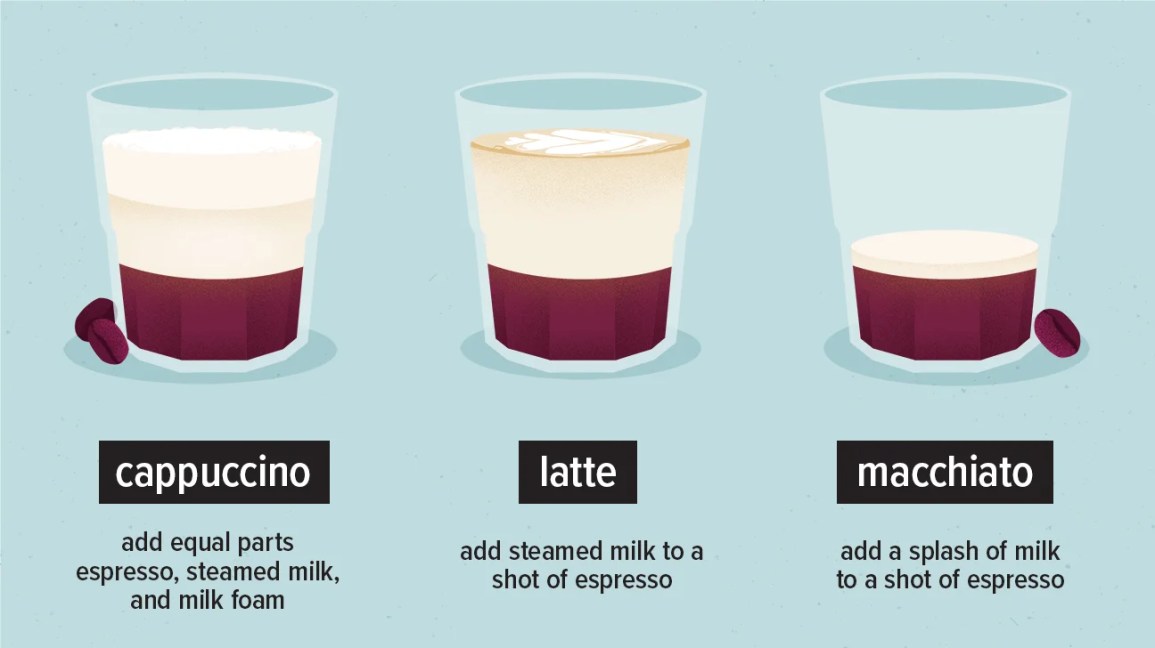Yes, cappuccino does have caffeine. A typical serving contains about 80 milligrams.
But how much caffeine is in your cup can vary. Coffee lovers often wonder about their favorite drinks. Is it packed with caffeine or not? Cappuccino, with its creamy texture and rich flavor, is a popular choice. But, does it give you the caffeine kick you need?
Understanding caffeine content can help you make informed choices about your coffee habits. It’s important for people sensitive to caffeine or those monitoring their intake. In this blog post, we’ll dive into the details of cappuccino’s caffeine content. We’ll explore how it compares to other coffee drinks and what factors affect its caffeine levels. So, let’s get started!

Credit: gracesong.web.illinois.edu
Introduction To Cappuccino
A cappuccino is a delightful coffee drink that combines espresso, steamed milk, and milk foam. It is known for its rich flavor and creamy texture, making it a favorite among coffee enthusiasts. But does cappuccino have caffeine? Before diving into that, let’s explore its origins and global popularity.
Origins And History
The cappuccino has a fascinating history that dates back to the 17th century. It originated in Italy and was inspired by the Viennese coffee tradition. The name “cappuccino” is derived from the Capuchin friars, whose brown robes resembled the coffee’s color. Over time, the drink evolved, and the modern cappuccino, with its distinctive layers, became popular in the early 20th century.
Italians perfected the art of making cappuccino, focusing on balance and presentation. The drink’s popularity spread across Europe and eventually to the United States. Today, it is a staple in cafes worldwide, enjoyed by millions every day.
Popularity Around The World
The cappuccino has gained immense popularity globally. Each country has its own unique take on this classic drink. In Italy, cappuccino is typically enjoyed in the morning, often with a pastry. Italians believe it’s too heavy for the afternoon.
In the United States, cappuccino is available all day and is often customized with flavored syrups or extra foam. In Australia, the drink is similar to a flat white but with more foam. In Japan, cappuccino art, where baristas create intricate designs with milk foam, has become a trend.
Regardless of regional differences, the love for cappuccino remains universal. Its rich taste and creamy texture continue to charm coffee lovers everywhere.
Caffeine Content In Cappuccino
Cappuccino is a popular coffee drink loved by many. But how much caffeine does it contain? Understanding the caffeine content in your cup can help you manage your daily intake better. Let’s explore the typical caffeine levels in cappuccino and see how it compares to other coffee drinks.
Typical Caffeine Levels
A standard cappuccino contains espresso, steamed milk, and milk foam. The caffeine content in a cappuccino depends on the amount of espresso used. Typically, one shot of espresso, which is about 1 ounce, has around 63 milligrams of caffeine. Since a traditional cappuccino uses one shot, it usually contains 63 milligrams of caffeine. Some cafes may add more espresso shots, increasing the caffeine content.
If you prefer a stronger cappuccino, you might opt for a double shot. This would double the caffeine, bringing it to about 126 milligrams. Always check with your barista to know exactly how much caffeine is in your cappuccino.
Comparison With Other Coffee Drinks
Compared to other coffee drinks, cappuccino has a moderate caffeine level. A standard 8-ounce cup of brewed coffee has about 95 milligrams of caffeine. This is higher than a single-shot cappuccino but lower than a double-shot cappuccino.
Espresso-based drinks vary in caffeine content. A latte, for example, typically has the same amount of caffeine as a cappuccino because it uses one shot of espresso. A macchiato, which is just espresso with a small amount of milk, also has similar caffeine levels.
On the other hand, a shot of espresso has less caffeine than a cup of brewed coffee but is more concentrated. This makes espresso drinks like cappuccino a good option for those who enjoy a rich coffee flavor without excessive caffeine.
Factors Affecting Caffeine Levels
Understanding the caffeine levels in your cappuccino can be quite interesting. Various factors impact the amount of caffeine in this beloved coffee drink. Here, we explore two key elements: the type and roast of the coffee bean, and the brewing methods. Let’s dive in!
Bean Type And Roast
One major factor is the type of coffee bean. Different beans have varying caffeine content. Arabica beans are popular for their smooth flavor but have less caffeine. On the other hand, Robusta beans contain more caffeine but offer a stronger, more bitter taste.
The roast level also plays a significant role. Light roasts tend to have more caffeine compared to dark roasts. This is because the longer roasting process of dark beans reduces caffeine content. So, if you prefer a strong caffeine kick, choose a light roast cappuccino.
| Bean Type | Caffeine Content |
|---|---|
| Arabica | Low |
| Robusta | High |
Brewing Methods
The brewing method used to make your cappuccino also affects caffeine levels. Different techniques extract varying amounts of caffeine from the coffee grounds.
- Espresso: This method uses high pressure and hot water, resulting in a higher caffeine content per ounce.
- Drip Coffee: While not typically used in cappuccinos, drip coffee has lower caffeine per ounce compared to espresso.
- Cold Brew: This method involves steeping coffee in cold water for an extended period. It usually results in a higher caffeine content.
Choosing the right bean and roast, along with the brewing method, can significantly influence your cappuccino’s caffeine level. Make informed choices to enjoy your favorite drink!

Credit: www.reddit.com
Health Benefits Of Caffeine
Cappuccino, a popular coffee drink, contains caffeine. Many people enjoy its rich flavor and creamy texture. But did you know caffeine has various health benefits? Read on to learn more about the positive effects of caffeine on your mind and body.
Boosting Mental Alertness
Caffeine is a natural stimulant. It helps improve mental alertness. After drinking a cappuccino, you might feel more awake. Your brain becomes more active. This helps you focus better on tasks. Studies show caffeine can improve memory. It also enhances overall cognitive function. This makes it easier to concentrate and process information.
Physical Performance Enhancement
Caffeine can also enhance physical performance. Many athletes consume caffeine before workouts. It helps increase endurance. Caffeine boosts adrenaline levels. This hormone prepares your body for physical exertion. As a result, you can push harder and perform better. Caffeine also reduces the perception of effort. You feel less tired during exercise. This makes workouts more effective and enjoyable.
| Health Benefit | Description |
|---|---|
| Mental Alertness | Improves focus, memory, and cognitive function. |
| Physical Performance | Boosts endurance, adrenaline levels, and reduces effort perception. |
Caffeine in cappuccino offers these benefits. Enjoy your cup with the knowledge it supports your mind and body.
Potential Drawbacks
While cappuccino is a beloved beverage for many, it does come with potential drawbacks. Understanding these can help you make an informed decision about your caffeine intake.
Caffeine Sensitivity
Some people are more sensitive to caffeine than others. For these individuals, even a small amount of caffeine can cause issues. If you are caffeine-sensitive, consuming cappuccino may lead to unpleasant symptoms.
Symptoms of caffeine sensitivity include:
- Nervousness
- Restlessness
- Increased heart rate
- Insomnia
If you experience any of these symptoms, consider reducing your cappuccino intake.
Possible Side Effects
Even if you are not caffeine-sensitive, cappuccino can still have side effects. These side effects can vary based on the amount of caffeine consumed.
Common side effects include:
- Headaches
- Digestive issues
- Anxiety
- High blood pressure
It’s important to monitor your body’s response to caffeine. Moderation is key.
To keep track of your caffeine consumption, you can use the table below:
| Beverage | Average Caffeine Content |
|---|---|
| Espresso (1 oz) | 63 mg |
| Cappuccino (8 oz) | 80 mg |
| Black Coffee (8 oz) | 95 mg |
By being aware of these potential drawbacks, you can enjoy your cappuccino while minimizing any negative effects.

Credit: www.healthline.com
Decaffeinated Cappuccino
Craving a cappuccino without the caffeine buzz? Decaffeinated cappuccino is your answer. It offers the rich, creamy taste of a regular cappuccino. Yet, it doesn’t keep you awake at night. Let’s explore how to make it and some caffeine-free alternatives.
Preparation Methods
Making a decaffeinated cappuccino starts with decaf coffee beans. Brew these beans just like you would regular coffee. Use an espresso machine for best results. Steam milk until it’s frothy and mix it with the decaf espresso. Pour the frothed milk over the espresso shot. Your decaf cappuccino is ready!
Caffeine-free Alternatives
There are other caffeine-free options for cappuccino lovers. Try a chicory root cappuccino. Chicory root has a coffee-like taste but no caffeine. Brew it like regular coffee and add steamed milk. Or, try a grain-based coffee substitute like barley or rye. These give a similar flavor to coffee. Mix with steamed milk for a delightful drink.
Cappuccino In Daily Diet
Many people enjoy a cappuccino as part of their daily routine. This creamy coffee drink can be a delightful way to start the day. But how does it fit into a balanced diet?
Cappuccinos contain caffeine, which can affect your energy levels. It’s crucial to consider how often you drink it. Let’s explore some tips to enjoy cappuccino while maintaining a healthy lifestyle.
Moderation Tips
Drinking cappuccino in moderation is key. Here are some tips:
- Limit yourself to one or two cups per day.
- Choose low-fat milk options to reduce calorie intake.
- Avoid adding extra sugar or flavored syrups.
These simple changes can help you enjoy cappuccino without consuming too many calories or caffeine.
Balancing With Other Beverages
It’s important to balance cappuccino with other beverages. Consider these options:
| Beverage | Benefits |
|---|---|
| Water | Keeps you hydrated, zero calories. |
| Herbal Tea | Contains antioxidants, caffeine-free. |
| Green Tea | Low caffeine, boosts metabolism. |
By mixing in these drinks, you can stay hydrated and enjoy a variety of flavors throughout the day. This balance helps reduce the impact of caffeine from cappuccinos.
Enjoying a cappuccino can be part of a healthy diet. Just remember to drink it in moderation and balance it with other healthy beverages.
Frequently Asked Questions
Does Cappuccino Contain Caffeine?
Yes, cappuccino contains caffeine. It is made with espresso, which is a concentrated coffee beverage.
How Much Caffeine In A Cappuccino?
A standard 8-ounce cappuccino has approximately 80 milligrams of caffeine. This amount can vary based on the coffee beans used.
Is Cappuccino Stronger Than Regular Coffee?
Cappuccino is not stronger than regular coffee. It has a balanced flavor due to the addition of steamed milk.
Can I Get A Decaf Cappuccino?
Yes, you can order a decaf cappuccino. It is made using decaffeinated espresso, which has minimal caffeine.
Conclusion
Cappuccino does have caffeine. It’s a great choice for a morning boost. The rich flavor pairs well with breakfast. Enjoy it in moderation to avoid too much caffeine. Many people love its creamy texture and strong taste. Trying different coffee drinks can be fun.
Cappuccino is just one delicious option. So, next time you crave coffee, consider a cappuccino. Your taste buds will thank you!
